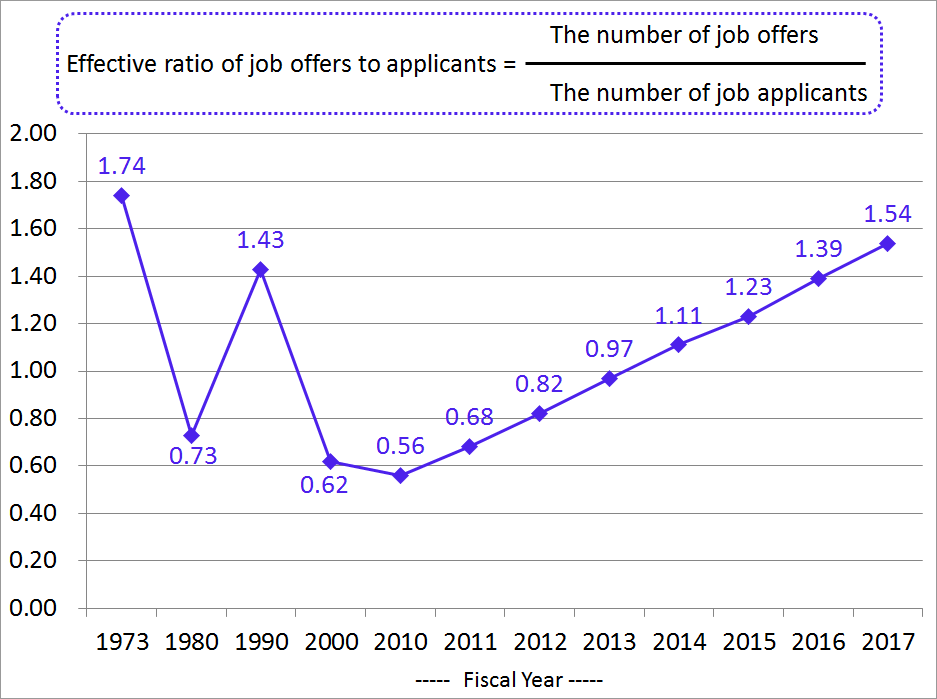Column Finance and the Social Security System 2018.06.01
【Aging, safety net and fiscal crisis in Japan】No.120: Effective Ratio of Job Offers to Applicants Reached 1.54
In April 2018, the Ministry of Health, Labor and Welfare announced that the effective ratio of job offers to applicants in fiscal year 2017 was 1.54. An effective ratio of job offers to applicants is a value obtained by dividing the number of job offers by the number of job applicants. Generally, the higher the figure, the more is the expansion trend of the economy. As shown in Figure 1, the record high of the ratio is 1.74 in 1973. In 1973, the fourth Middle East war in October led to the first oil shock, and Japan's high economic growth period reached a major turning point. Further, the value of 1.43 in 1990, which is the second peak of the effective ratio of job offers, immediately preceded the bubble economy burst in 1991.
The rise to 1.54 in 2017 in the effective ratio of job offers to applicants was the result of the overlapping of labor shortage with economic expansion even at a lower growth rate. As Table 1 shows, the unemployment rate has declined in all age groups.
Figure 1: Effective ratio of job offers to applicants

Source: Ministry of Internal Affairs and Communications
Table 1: Unemployment rate by age group

Source: Ministry of Internal Affairs and Communications
